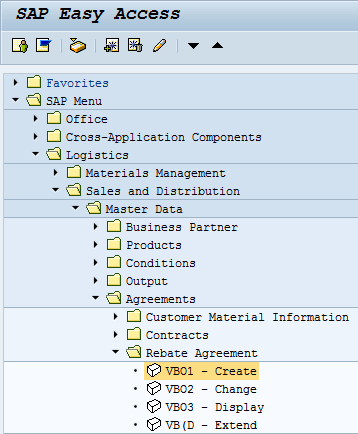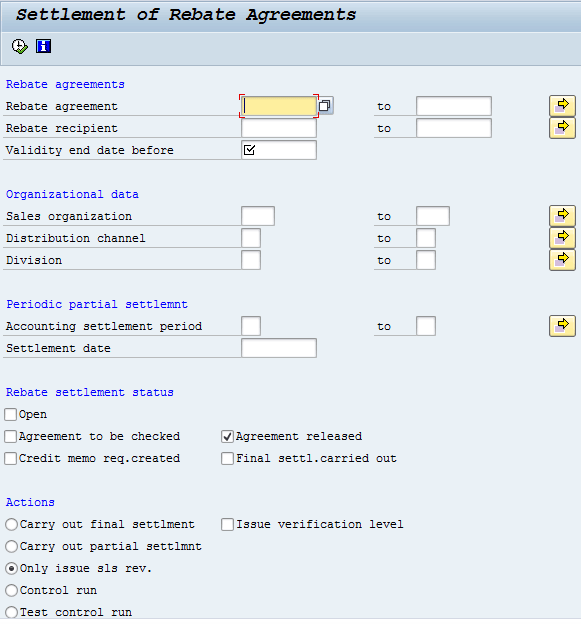 With this post we continue our series of articles discussing potential SAP Interview Questions. Today, we are going to discuss the interview question related to rebate agreements in SAP. This piece of SAP functionality is related to Sales and Distribution (SD), Billing (BIL). Therefore, this post is likely to be of high interest for SAP SD consultants.
With this post we continue our series of articles discussing potential SAP Interview Questions. Today, we are going to discuss the interview question related to rebate agreements in SAP. This piece of SAP functionality is related to Sales and Distribution (SD), Billing (BIL). Therefore, this post is likely to be of high interest for SAP SD consultants.
Rebate Agreements: Basic Information
Rebate agreements are created to offer special discounts for customers. The key feature of this type of discounts is that it is paid retroactively. The amount of discount offered through rebate agreements is determined based on the customer’s sales volume over a specific period of time. Rebate agreements in SAP are created in the transaction VBO1. They define the customer who receives the discount, criteria on which the rebate is based, and validity of the rebate.

Several condition records for each material or a group of materials that a customer buys are created inside the rebate agreement. Each record can specify the rebate amount either as percentage or fixed value. Moreover, condition records can use pricing scales so that the customer can earn more discount by buying more products. Rebate agreements are specified in the header of billing documents (in the Price data area) and enable SAP to keep track of the sales volume corresponding to a particular customer. Depending on the SAP configuration, it is possible to automatically post accruals together with billing documents, so that the accumulated rebate amount is recorded in the accounting. For paying out the rebate to the customer, it is necessary to settle the rebate agreement. The settlement of the rebate agreement leads to issuance of a credit memo to the customer for the accumulated rebate amount.
Rebate Agreements: Prerequisites
Before using rebate agreements, it is necessary to prepare an SAP system with several customizing settings. Here are these prerequisites:
- The Sales Organization needs to be marked as relevant for rebate processing. Rebate agreements can be created only in such sales organizations.
- The Payer needs to be marked as relevant for rebate processing. You can do it in the master date of the Payer.
- The Billing Type that is used for rebate processing needs to be marked as relevant. Only the sales volume from the documents with these billing types will be considered by the system when calculating rebates.
Rebate Agreements: Settlement
When the validity period of a rebate agreement is over, it needs to be settled and the accumulated discount should be credited to the customer’s account. However, it is also possible to perform partial partial settlement of the rebate agreement during its validity period. Settlement of rebate agreements is performed in the transaction VB(7.

When the final settlement of a rebate agreement is carried out, the SAP system will automatically calculate the rebate based on the sales volume statistics and the lump sum discounts (if applicable). It will also deduct any rebates that have been previously paid out to this customer. Next, the system will create a credit memo request that can be released by the users and used for generation of the final credit memo. The final settlement of rebate agreements can be performed manually, automatically or with a batch job (in background).
When the partial settlement of a rebate agreement is carried out, it takes into account all partial payments. The amount of payments can be limited in customizing to the cumulative accruals of the condition record, to the amount that would be paid if final settlement were presently carried out, or be unlimited.
Final Remarks
Rebate agreement is an important concept in billing. It is widely used by different companies in various industries. SAP consultants that are looking for SAP SD jobs should be familiar with the process of managing rebate agreements in SAP. SAP offers convenient functionality for creating, accounting for, and settling rebate agreements.
Further Reading
For additional information on rebate processing in SAP we recommend you to read the help documents at SAP Help Portal.
